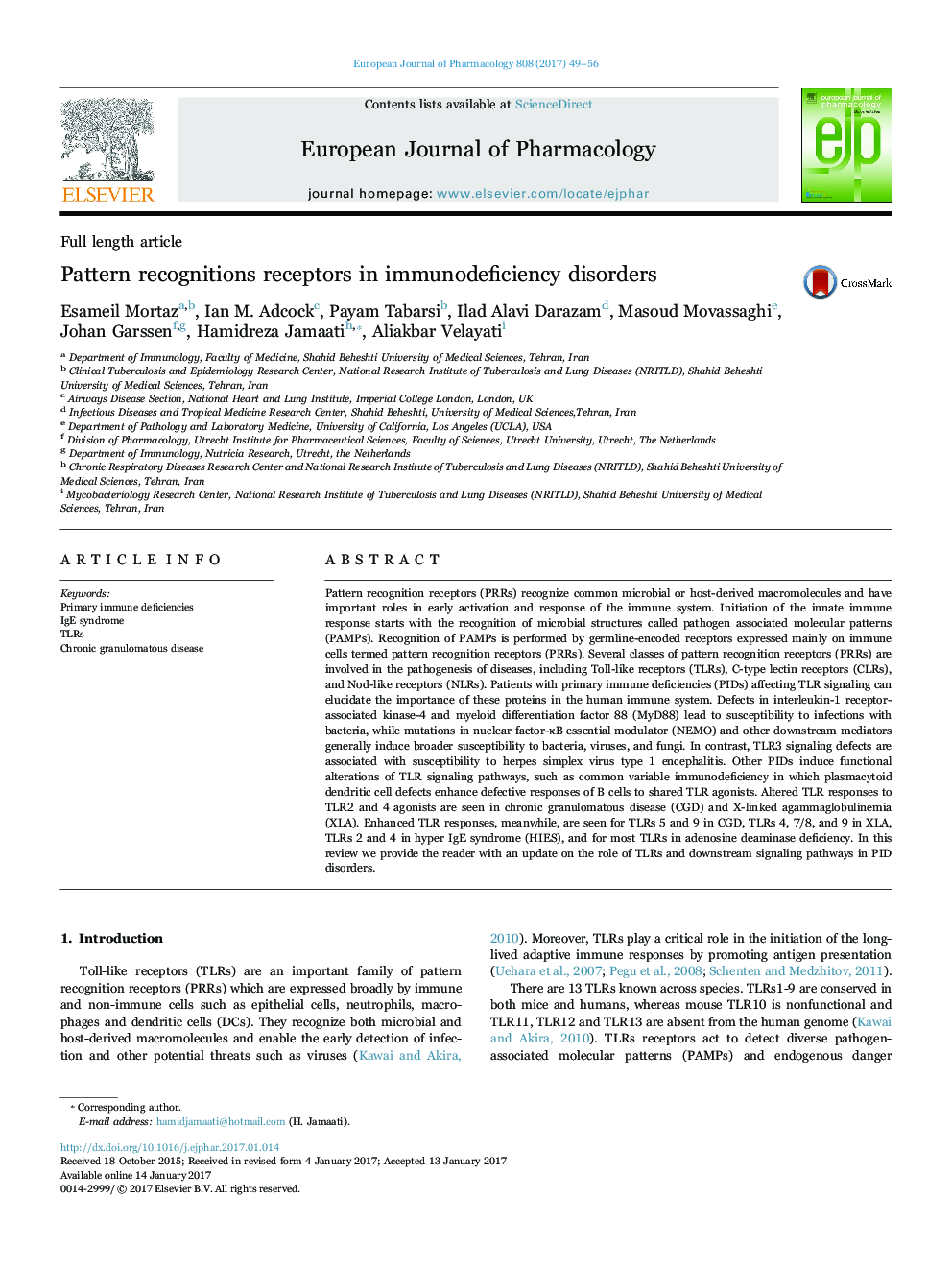| کد مقاله | کد نشریه | سال انتشار | مقاله انگلیسی | نسخه تمام متن |
|---|---|---|---|---|
| 5554597 | 1558872 | 2017 | 8 صفحه PDF | دانلود رایگان |
Pattern recognition receptors (PRRs) recognize common microbial or host-derived macromolecules and have important roles in early activation and response of the immune system. Initiation of the innate immune response starts with the recognition of microbial structures called pathogen associated molecular patterns (PAMPs). Recognition of PAMPs is performed by germline-encoded receptors expressed mainly on immune cells termed pattern recognition receptors (PRRs). Several classes of pattern recognition receptors (PRRs) are involved in the pathogenesis of diseases, including Toll-like receptors (TLRs), C-type lectin receptors (CLRs), and Nod-like receptors (NLRs). Patients with primary immune deficiencies (PIDs) affecting TLR signaling can elucidate the importance of these proteins in the human immune system. Defects in interleukin-1 receptor-associated kinase-4 and myeloid differentiation factor 88 (MyD88) lead to susceptibility to infections with bacteria, while mutations in nuclear factor-κB essential modulator (NEMO) and other downstream mediators generally induce broader susceptibility to bacteria, viruses, and fungi. In contrast, TLR3 signaling defects are associated with susceptibility to herpes simplex virus type 1 encephalitis. Other PIDs induce functional alterations of TLR signaling pathways, such as common variable immunodeficiency in which plasmacytoid dendritic cell defects enhance defective responses of B cells to shared TLR agonists. Altered TLR responses to TLR2 and 4 agonists are seen in chronic granulomatous disease (CGD) and X-linked agammaglobulinemia (XLA). Enhanced TLR responses, meanwhile, are seen for TLRs 5 and 9 in CGD, TLRs 4, 7/8, and 9 in XLA, TLRs 2 and 4 in hyper IgE syndrome (HIES), and for most TLRs in adenosine deaminase deficiency. In this review we provide the reader with an update on the role of TLRs and downstream signaling pathways in PID disorders.
Journal: European Journal of Pharmacology - Volume 808, 5 August 2017, Pages 49-56
